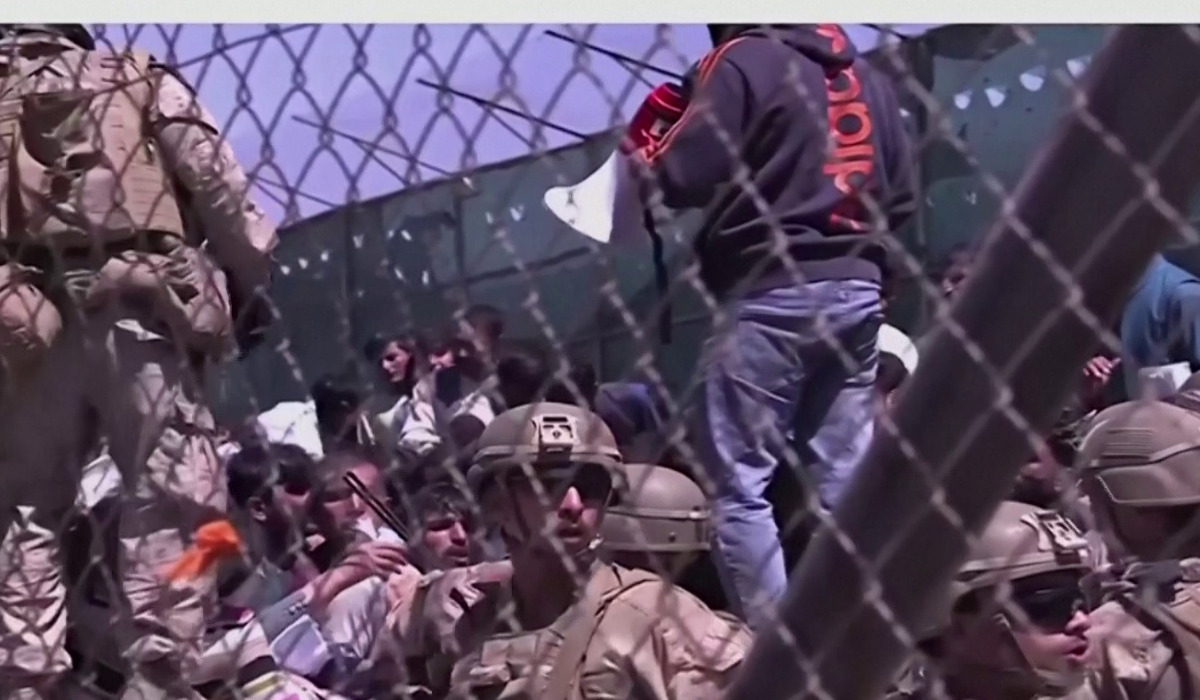The Taliban has killed a Daesh (ISIS) leader suspected of having planned the August 2021 suicide bombing outside Kabul airport that left more than 170 Afghanistan citizens and 13 US troops dead, the White House said Tuesday night.
“The ISIS-K terrorist who was the mastermind of the horrific attack at Abbey Gate that killed 13 brave American service members and many others has been removed from the battlefield,” White House National Security Council spokesperson John Kirby said in a statement.
“He was killed in a Taliban operation, which is another in a series of high-profile leadership losses ISIS-K has suffered this year. He was a key ISIS-K official directly involved in plotting operations like Abbey Gate and now is no longer able to plot or conduct attacks,” he added.
Kirby did not provide further details about the operation or the name of the Daesh leader but said the US made “clear to the Taliban that it is their responsibility to ensure that they give no safe haven to terrorists, whether al-Qaeda or ISIS-K.”
However, Pentagon Press Secretary Brig. Gen. Patrick Ryder said in a statement emailed to some media outlets late Tuesday that the U.S. was not involved in the operation but stated he “can confirm that the senior ISIS-Khorasan plotter responsible for planning” the attack had been killed.
The Taliban has not however commented on the White House’s claims of the Daesh leader’s death not has the Taliban confirmed his death.
Pentagon Leak
The announcement of the death of the senior Daesh member comes just days after the Washington Post reported that according to a leaked classified Pentagon document, Afghanistan has become a significant coordination site for Daesh – from where the terrorist group plans attacks across Europe and Asia, and conducts “aspirational plotting” against the United States.
The attack planning, detailed in US intelligence findings leaked on the Discord messaging platform and obtained by The Washington Post, reveal specific efforts to target embassies, churches, business centers and the FIFA World Cup soccer tournament, which drew more than 2 million spectators last summer in Qatar. Pentagon officials were aware in December of nine such plots coordinated by Daesh leaders in Afghanistan, and the number rose to 15 by February, says the assessment, which has not been disclosed previously.
“ISIS has been developing a cost-effective model for external operations that relies on resources from outside Afghanistan, operatives in target countries, and extensive facilitation networks,” says the assessment, which is labeled top-secret and bears the logos of several Defense Department organizations. “The model will likely enable ISIS to overcome obstacles — such as competent security services — and reduce some plot timelines, minimizing disruption opportunities.”
The Afghanistan findings are one facet of a complex and evolving terrorist threat described in the leaked documents, now linked to a criminal case in which a member of the Massachusetts Air National Guard is accused of sharing classified information with friends online.
Daesh activities in Afghanistan
An Amu finding shows that Taliban, despite its repeated denials of Daesh presence in the country, carried out eight operations against militants affiliated with Daesh’s Khorasan branch in a 23-day period from March 3 to March 26.
The operations were carried out in the capital city, Kabul, as well as in Herat, Balkh and Nimroz provinces.
The finding shows that Daesh carried out seven attacks against Taliban targets in the same period.
On March 9, a suicide bomber killed Mohammad Daud Muzammil, the Taliban’s governor for Balkh province, in Mazar-e-Sharif, the provincial capital. In a reprisal attack, the Taliban then claimed that they killed three key Daesh leaders – including Shadow governor for Khorasan Mawlawi Ziauddin; IS-K member Abu Omar Afridi; and a military trainer and bomb-making expert Salman Tajikistani – during a raid in Mazar-e-Sharif.
According to the CENTCOM commander, around 6,500 Daesh fighters are in Afghanistan of which 4,000 militants have been stationed across from the Tajikistan border.
On January 12, the Taliban defense ministry in a letter, a copy of which was seen by Amu TV, told the group’s border forces that around 7,000 Daesh members were expected to enter Afghanistan from Pakistan. According to the letter, these militants, led by a person named Muslim Kotwal, had received “extremist training” in the Korm area of Pakistan.





